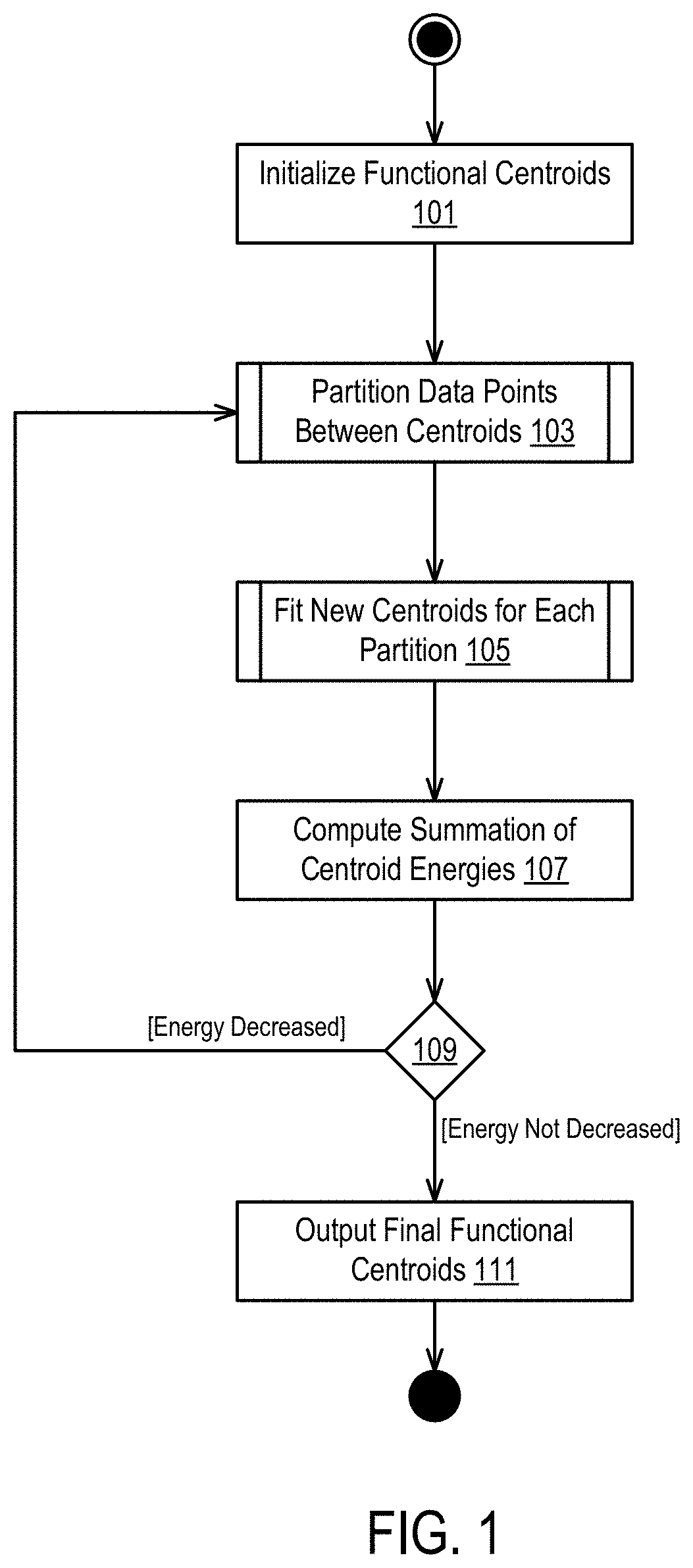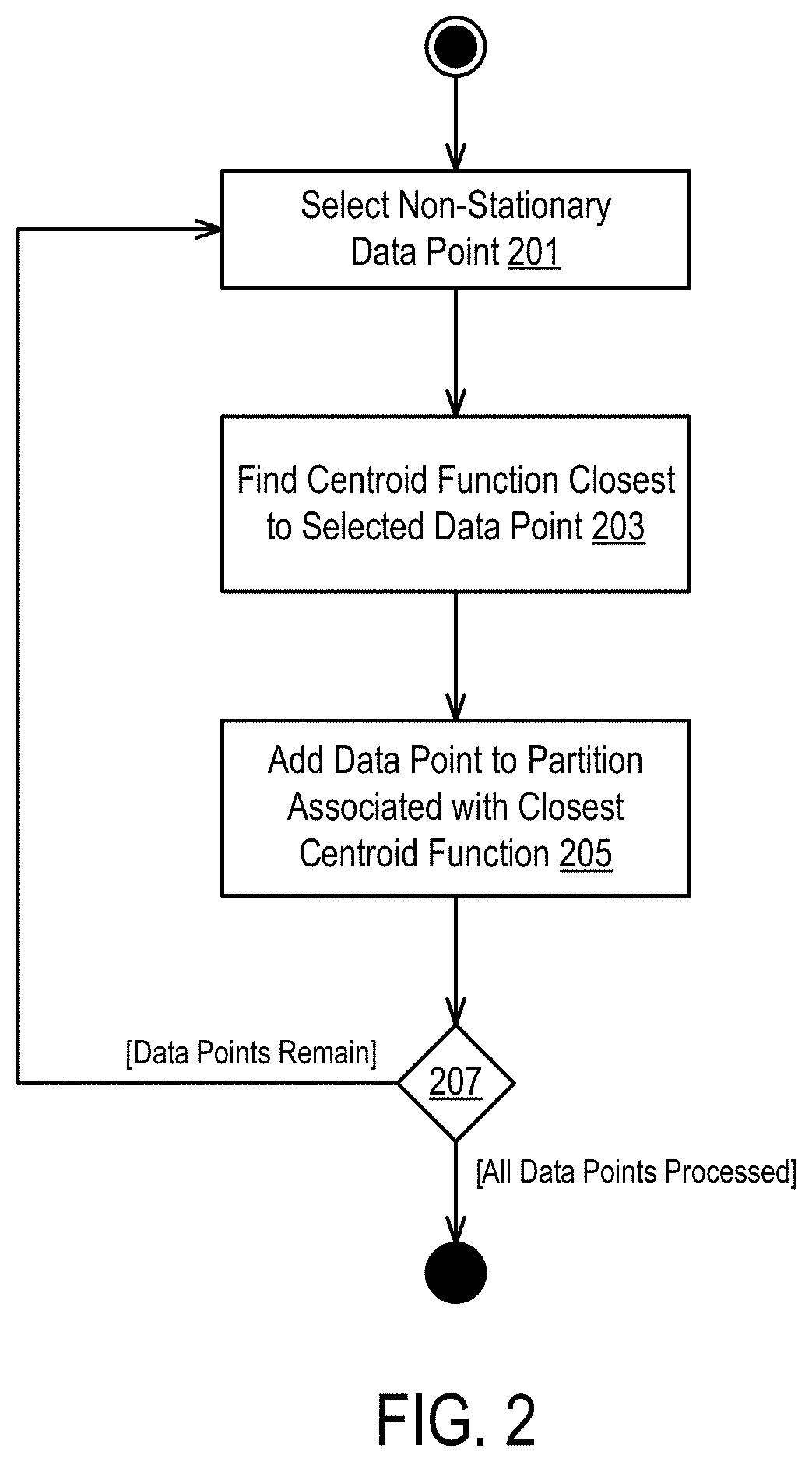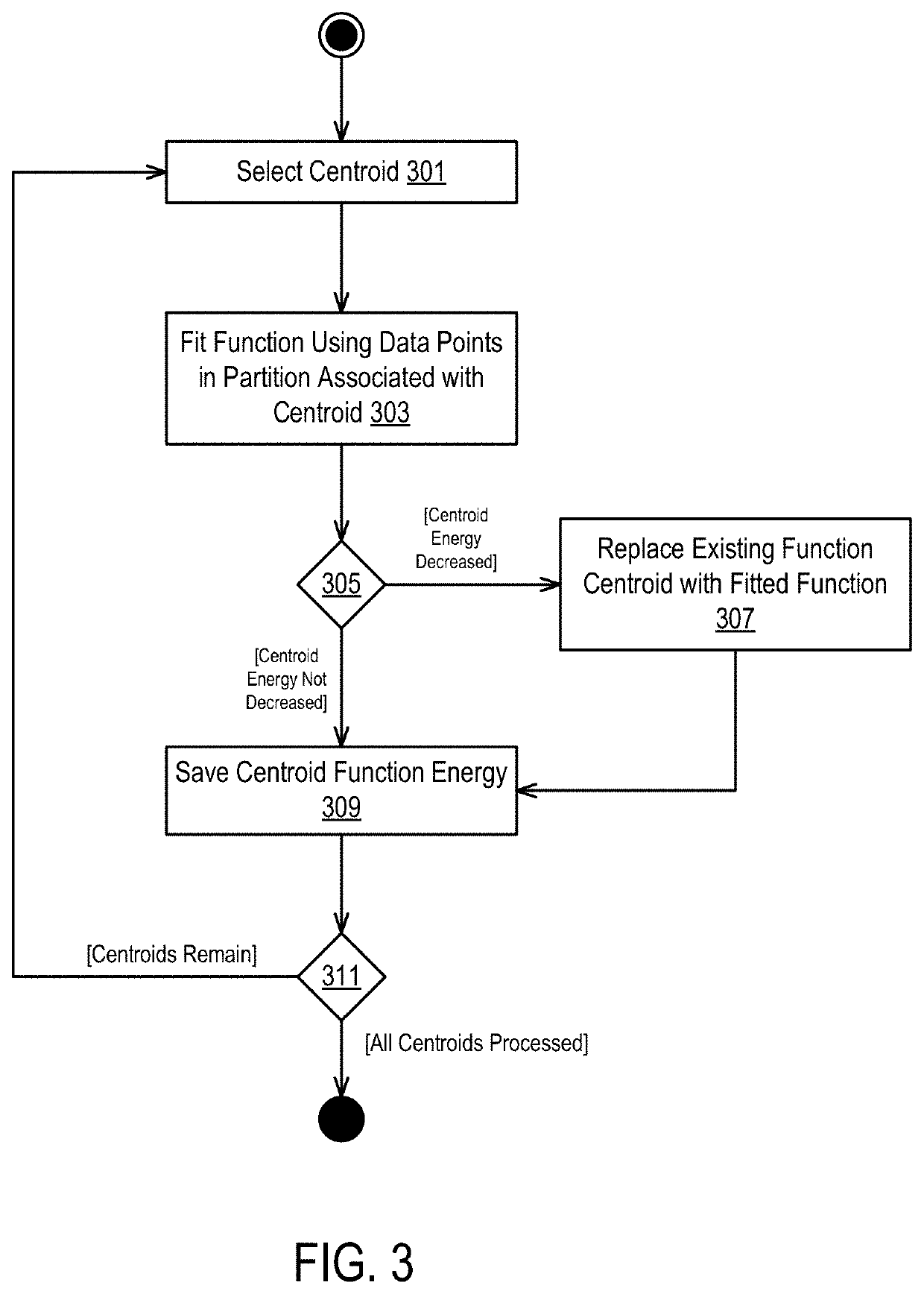Temporal clustering of non-stationary data
- Summary
- Abstract
- Description
- Claims
- Application Information
AI Technical Summary
Benefits of technology
Problems solved by technology
Method used
Image
Examples
first embodiment
[0023]In a first embodiment, the method selects a random point in each of the partitions. Next, a function is fit using the randomly selected points. This process can be repeated multiple times to generate multiple functional centroids. This process is illustrated in the following pseudo code:
TABLE 1Given T, , kC ← {{c1}, ... {ck}: ci~U[T]F ← {f1, ... fk: fi = Fit({ci}, )return F
where T represents the timestamped data set, represents a function space, k represents the number of centroids desired, C represents a set of randomly selected points (c . . . a), U[T] represents the partitioned timestamped data set (T), Fit represents a fitting function, ƒ1 . . . ƒk represent functions in function space , and F represents a list of k functional centroids.
second embodiment
[0024]In a second embodiment, multiple points are selected for each partition as illustrated in the following pseudo code:
TABLE 2Given T, , k, dC ← {C1 ... Ck: Ci = {ci1}, ... cid} Λ cij ~ U[T]F ← {f1, ... fk: fi = Fit(Ci, )return F
where Ci represents a set of randomly chosen points (one per partition), d represents the number of partitions, and j represents a given partition between 1 and d (remaining variables are described in the description of Table 1.
third embodiment
[0025]In a third embodiment, only one point is selected in each partition, however k-init++ initialization is used to select those points instead of uniform selection.
[0026]In step 103, the method partitions data points between the function centroids identified in step 101. Further discussion of the operation of step 103 is provided in FIG. 2, the disclosure of which is not repeated herein.
[0027]In general, the method iterates through each data point in the input non-stationary data set. For each point, the method calculates the distance between the point and the output of each of the functional centroids: s−ƒi(t), where s is the value of the non-stationary data set point at time t and ƒi is functional centroid i. The method then selects the minimum value of |s−ƒi(t)| for each of the functional centroid and assigns the point (s, t) to a centroid set (Tc) for that centroid c.
[0028]In step 105, the method then fits new centroids for each partition generated in step 103. Further discus...
PUM
 Login to View More
Login to View More Abstract
Description
Claims
Application Information
 Login to View More
Login to View More - R&D
- Intellectual Property
- Life Sciences
- Materials
- Tech Scout
- Unparalleled Data Quality
- Higher Quality Content
- 60% Fewer Hallucinations
Browse by: Latest US Patents, China's latest patents, Technical Efficacy Thesaurus, Application Domain, Technology Topic, Popular Technical Reports.
© 2025 PatSnap. All rights reserved.Legal|Privacy policy|Modern Slavery Act Transparency Statement|Sitemap|About US| Contact US: help@patsnap.com



